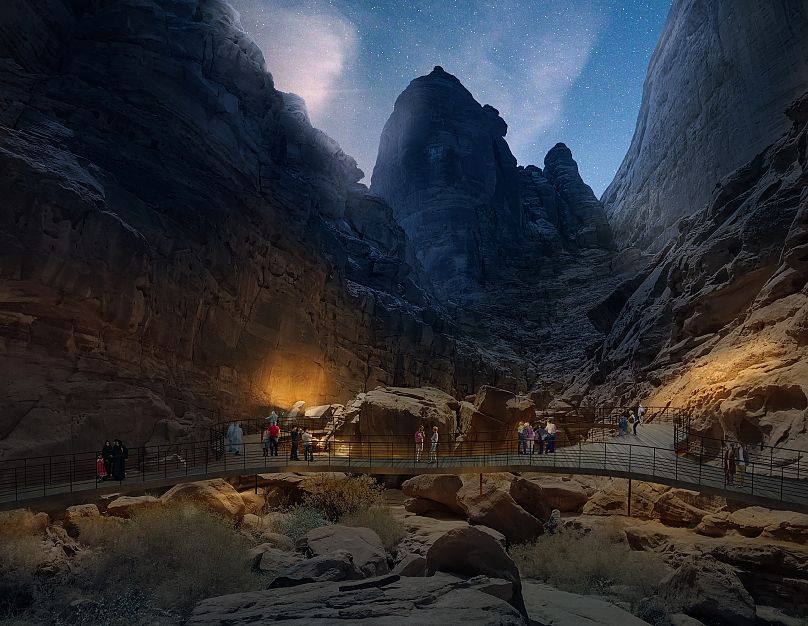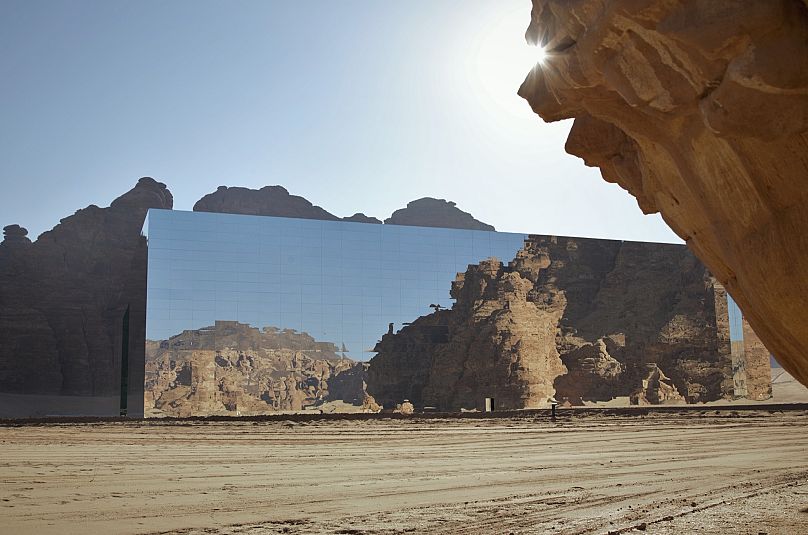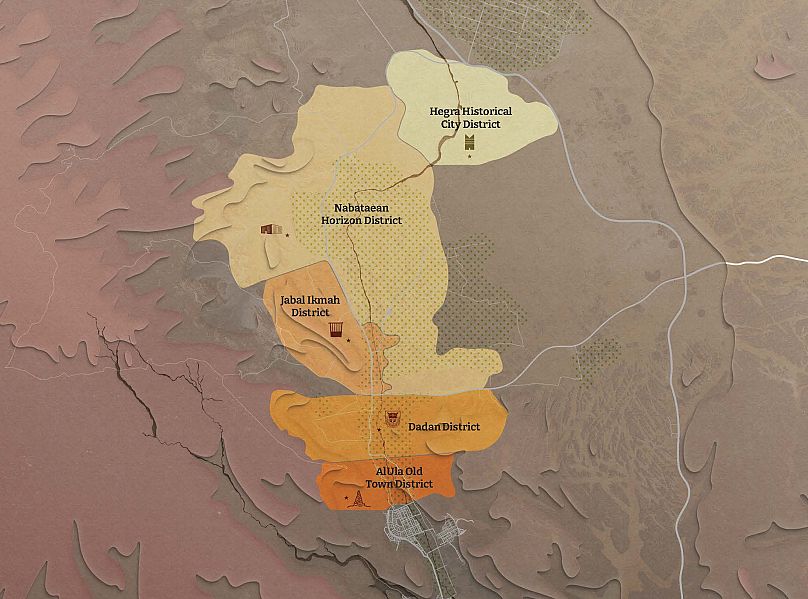An ambitious regeneration plan has seen this once important but long-forgotten region of Saudi Arabia transformed into a global destination for culture, art and nature tourism.
AlUla is a former trading post located in the northwest of the country at the intersection of the historical silk and incense routes. The wealth and importance of the region in ancient times are still obvious today and vast monuments loom out of the orange sandstone.
Environmentally friendly means of transport crisscross the region, linking its five districts with walking, cycling and horse-riding trails.
The most impressive of these districts is Hegra, a historic and once prosperous city with more than 110 tombs carved from the sandstone outcrops. A UNESCO World Heritage Site, it was once the second city of the Nabataean Kingdom after Petra, which it rivals in archaeological treasures. And yet Hegra is relatively unknown to the outside world.
The most breathtaking of its tombs is that of Lihyan Son of Kuza, a vast monolith also known as the ‘Lonely Castle’ for its crenellated pediment and solitary position. Nearby are the remains of the 18th-century Ottoman fort and the restored Hijaz station, a remnant of the railway that once ran from Damascus to Jerusalem.
Another of the highlights of this breathtaking desert region is the ‘open-air library’ in the district of Jabal Ikmah. Locals joke that it represents ‘early Twitter’ – wall after wall is inscribed with petroglyphs in Aramaic, Nabataean and other ancient languages.
At the heart of the AlUla complex is its Old Town, a 12th-century maze of densely packed buildings constructed from mud and stone. These were once homes, shops and places of lodging for pilgrims and traders.
Not everything in AlUla dates back centuries.Some of its greatest attractions have been built in the last few years as part of Saudi Arabia’s ‘Vision 2030’ plan to reduce the country’s dependence on oil and, among other projects, attract foreign visitors.
The Maraya concert hall, for example, is dazzlingly futuristic. A glittering cube, it is the largest mirrored building in the world, reflecting the desert landscape around it. Future architectural projects include a Jean Nouvel-designed resort, carved entirely into a rock formation.
Getting around
AlUla plans to be net carbon-neutral by 2035 and the regeneration project is a showcase for a range of sustainable solutions. When it comes to transportation, the design of its transport network reduces both road congestion and the volume of traffic.
Linking all five districts is the ‘Wadi of Hospitality’. The word ‘wadi’ is Arabic for a mostly dry riverbed, which in this case has been converted into a 25km ecological corridor.
Visitors will be able to walk, cycle or ride horses along this green belt, enjoying the transition from oasis to desert. A series of replanting and conservation programmes have been carried out to connect people to the past and present biodiversity of the route.
Many of the walking and cycling trails at AlUla, such as the Hijaz railway trail, follow the paths used by pilgrims over the centuries.
The area’s main transport link is a 46km low-carbon tram line. It will ferry visitors between the AlUla International Airport and the five districts, ending at Hegra. Known as the ‘AlUla Experiential Tram’, it will evoke the trams of the early 20th century, with carriages designed to allow passengers to enjoy the stunning scenery.
The north section of the tram, running from the Old Town to Hegra, should be finished by 2023, while the south section – from the airport to the Old Town – will be completed by the end of 2030.
Each of the 17 stations along the tram line will have a unique design, each inspired by AlUla’s historic civilisations and sites of interest. Stations will act as mobility hubs in more ways than one, featuring racks for shared and e-bikes, on-demand electric buggies and electric vehicle recharging points.
The stations will also intersect with electric-bus lines and will form the starting point for many tourist activities, such as horse- and camel-riding.
The tram is not just designed for visitors.It is hoped that residents will find it more convenient than driving. Silent and energy-saving, the system is hugely beneficial for the environment. Concern for the local population and the natural surroundings will always be at the heart of the AlUla project.




